NADIR AFONSO. MUSEO CARLO BILOTTI – ROME
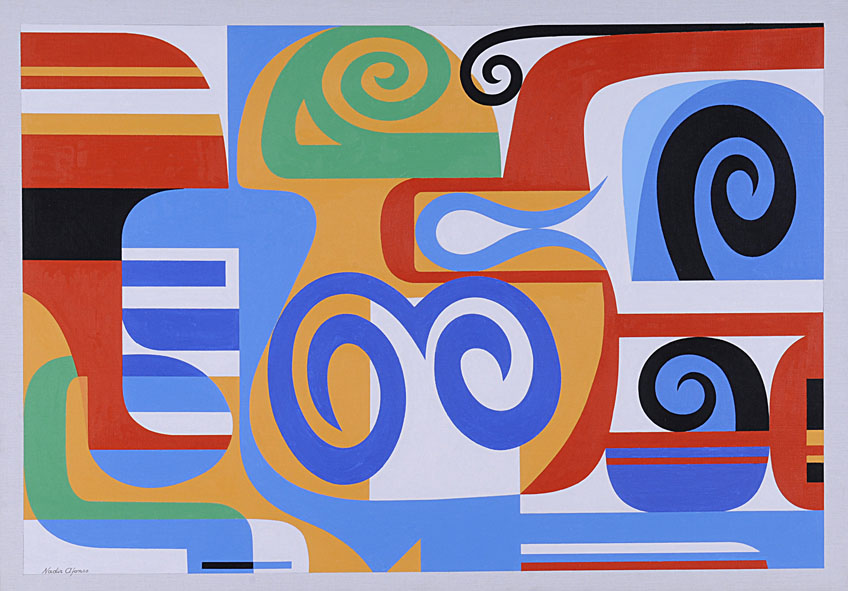
NADIR AFONSO. Architect, painter and collector
ROMA, Museo Carlo Bilotti
July 18 – September 30, 2012
The exhibition Nadir Afonso. Architect, painter and collector curated by Stefano Cecchetto will be held in Rome from July 18 to September 30, 2012 at the Bilotti Museum. The show is on the patronage of the Museu da Presidencia da Republica of Lisbon and the Embassy of Portugal in Rome.
In addition to Afonso’s work as a painter, the exhibition was designed to look at his activity as a collector, displaying artworks by his artist friends with whom he was in contact. These include Pablo Picasso, Max Ernst, Candido Portinari, Giorgio de Chirico, Max Jacob, and Fernand Léger. The show reconstructs the atmosphere of the second half of the 20th century by looking at Nadir Afonso in his status as an artist who was a friend of many other artists. In that period, the interaction between different genres and intellectual discussions were without doubt driving forces for a renewed vigour in art. The works chosen are linked to the Baroque aspects of the city and metaphysical features, in order to illustrate the links with De Chirico who had a notable effect on Afonso’s expressionist work.
The opportunity for learning more about Portuguese artist Nadir Afonso, his work and his cultural milieu, began to take shape two years ago, promoted by the Foundation formed by the artist himself in order to celebrate his ninetieth birthday with a series of international exhibitions. After Paris, Rio de Janeiro and Lisbon, Rome is the location for this tribute to a multi-faceted personality of 20th-century art.
Another show in Italy will be held in Venice from 29 August to 10 November 2012, on occasion of the Architecture Biennial exhibition. This will highlight Nadir Afonso’s identity as an architect and artist, and his work in cooperation with two great architects: Le Corbusier and Oscar Niemeyer.
The core of the exhibition was designed principally with the objective of illustrating the artist’s contemporary work. Over the last ten years, works by Afonso transmit the power of innovative motifs that transcend the conventional structures of art movements and explore a new language of form.
Nadir Afonso’s Cities take the form of emergent architecture. They seem to appear from a reality that has been eliminated, but that nonetheless surfaces in the structures of diagonal and straight lines, and sinusoidal waves in different colours, in which the quiet intimacy of the artist’s vision expands in order to search for a new, more extensive and organized space.
The many works from this last phase that are shown in the exhibition include Florença (2006) in which the Tuscan city is immersed in shades of red, and is apparently constructed on hyperbolic curves; Kuala Lumpur (2008), which takes form from a pattern of swirling colour; Toronto (2007), in which the composition’s structure is suspended in space; and Citade Incerta (2010), in which the poetry of gesture seems to be constructed on the perspective of evanescent geometry.
These recent works, more than others, reveal the artist’s power and determination to continue his personal quest for the rediscovery and application of a new metaphysical language.
The exhibition also presents a series of works illustrating Nadir Afonso’s oeuvre, starting from pieces linked to the 1950s-‘60s period, right through to the most recent paintings that are based on the theme of the city and its chromatic interpretation.
The first part of the exhibition presents works most closely linked to the ‘pre-geometric’ and ‘Baroque’ stage of the early 1950s, which developed from Afonso’s practice of architecture. These paintings, often with a very striking visual effect based on the hues used, suggest a ‘Spatialist’ treatment emerging from the interchange of tones and colours, and the artist’s personal pleasure in inventing planes of perspective. But even here, in the process of composition, the artist abandons pure enjoyment, standardized schemes and ephemeral pictorial ideologies, and returns to a preference for renewed commitment. This would lead him towards the expressionism of a completely personal language.
NADIR AFONSO. Architect, painter and collector
Museum Carlo Bilotti Orangery of Borghese Park
Viale Fiorello La Guardia – 00197 Rome
July 18 – September 30 2012
Catalog: Carlo Cambi editor
Hours
From Tuesday to Sunday 9:00 a.m.–7:00 p.m. (Please note: ticket office closed 6:30 p.m. ); closed on Monday
Prices
Museum collection + Current exhibition:
Ticket € 7,00 – Reduced € 6,00
For resident Citizen on Roman territory (valid documents to confirm it are request) ticket € 6,00 – Reduced € 5,00
10% Discount at Cafe’ “Casina del Lago” by showing your Museum’s ticket on the day of purchase.
Press Office
SPAINI & PARTNERS T. +39.050 36042/310920 www.spaini.it
Guido Spaini guido.spaini@spaini.it
Matilde Meucci mobile +39.329 6321362 matilde.meucci@spaini.it
Rachele Giannessi mobile +39.3473839137 ufficiostampa@spaini.it
BIOGRAFY
1920
Nadir Afonso, the second son of Artur Maria Afonso and Palmira Rodrigues, was born on 4 December, in Chaves, Portugal.
1924
At the age of four, he paints a perfect circle in red paint on the wall of the living room. Amazed at the idea that such a small child could have done this, his parents were unable to punish him.
1934
At the age of twelve, he realizes that his vocation is to be a painter and asks his father to buy him an easel and paints so that he can paint landscapes in the open air. When his wish is granted, he paints several views of Chaves, namely gardens, the bridge, and the banks of the river Tâmega. In the same year, he is awarded second prize in the contest: “Which is the most beautiful stretch of Portuguese landscape?”
1938
After completing his secondary education to enrol in the painting course at the Escola Superior de Belas Artes do Porto.
1940
Up to 1946 he participates in several exhibitions by the Group of Independent Students from the School of Fine-Arts, in Porto
1943
He becomes interested in optical and geometric phenomena, and begins his first studies of this field.
1944
His work A Ribeira is purchased by the Nacional Museum of Contemporary Art, inLisbon.
1945
In January he exhibits the following paintings at the ninth Modern Art Exhibition, held at the SNI: Vila Nova de Gaia, in Porto and Clérigos. They are enthusiastically received by critics, who are impressed by their quality and innovation. Toward the end of 1945, he takes part in an aesthetic mission to Évora.
1946
He moves to Paris to attend a painting course at the École des Beaux-Arts, with a one-year scholarship from the French government, through the intervention of the Brazilian painter Portinari, work with the architect Le Corbusier. In the meantime, having decided to find some work, he is accepted at the ATBAT architecture studio run by the Le Corbusier.
1947
Corbusier, aware of Nadir’s interest in painting, gives him the mornings off to paint (without cutting his wages). During one of Fernando Léger’s frequent visits to ATBAT, Corbusier talks him into sharing his studio with the Portuguese architect. For some time, Nadir is able to make use of the space and also to study the work of the French artist.
1948
He is accepted by the Salon des Moins de Trente Ans in Paris, where he plans to show Composition (1946). However, before the opening, he decides to withdraw his painting in protest against the poor quality of the works on display at the Salon.
Also in 1948, he successfully defends his thesis at the Escola de Belas Artes do Porto. Entitled “Architecture is not an Art”, it is based on a project built in Saint-Dié,Paris(the Duval textile factory), under the guidance of Le Corbusier.
1949
He works on the reconstruction of several towns which had been destroyed during World War II in the area ofNormandywhere the allied troops landed. After this period he travels to Scandinavia, Egypt, Greece, and Russia. In the meantime, he develops several studies.
1950
He returns to the ATBAT studio and works with Le Corbusier.
1951
After arriving in Brazil, he starts to work at Oscar Niemeyer’s studio. For three years, he works with both architecture and painting at the sometime. He collaborates with Niemeyer on the development of the project to commemorate the 400th anniversary of the foundation of the city of São Paulo. Later, he is invited by Niemeyer to run his new studio in São Paulo. Nadir accepts but, finding that his personality is not suited to the role, he soon decides to return to Paris.
1954
He renews contacts with artists studying kinetic art (Vasarely, Mortensen, Bloc). From this research, born the painting series he named “Espacillimité”.
1955
He submits an entry in the competition for the Monument to Henry the Navigator, in Sagres. The painter-architect considered this to be his most interesting architectural project, although he knew in advance that the winner has already been chosen.
1956
He exhibits at the Denise René Gallery, in Paris, and receives a proposal to work with the Greek architect Candillis in Bagnols-sur-Cèze (a town close to the Marcoule nuclear site) and Balata, in Martinique.
1957
Together with Vasarely, Mortensen, Herbin and Bloc, he takes part in an exhibition of kinetic art at the Denise René Gallery, in Paris an event that is uniquely contemporaneous with international art.
1958
He takes part in the Salon des Réalités Nouvelles in Paris, in which he shows his hitherto unseen series Espacillimité (Kinetic Machine). With the support of Michel Gaüzes, Madame Vaugel and Vasarely, he publishes La Sensibilité Plastique, Presses du Temps Présent, Paris. He brings works by Vasarely, Herbin, Mortensen, and Bloc to Portugal, with the aim of organizing an exhibition and catalogue. However, nobody is interested in the proposal.
1959
He presents his first survey exhibition at the Maison des Beaux-Arts in Paris.
1961
Due to his father’s illness he returns to Portugal, where he remains for the next two years. He works with the architect Carlos de Almeida, with whom he designs an urban plan for the city of Coimbra (not built). He stages a solo exhibition at the SNI and is one of the Portuguese representatives at the São Paulo Biennale.
1963
At the request of the architect Candillis, he draws up a plan for Agadir (not built).
He also develops a design for a Chaves bakery (classified as of public interest in 2006 and considered one of the ten most significant works of Portuguese architecture of the twentieth century). He exhibits at the Escola de Belas Artes doPorto.
1965
He decides to permanently give up architecture in order to devote himself exclusively to painting. From this point onwards, a growing number of works by Nadir are exhibited in solo and group exhibitions in Portugal and abroad and he receives increasing recognition from both institutions and critics.
1966
He exhibits at the Cooperativa Árvore, in Porto.
1967
He participates in the 2nd National Art Salon at the SNI in Porto and is awarded the National Prize for Painting.
1968
He spends two years in Paris on a Gulbenkian Foundation scholarship. Fernando Guedes publishes the monograph Nadir Afonso, Verbo, Lisbon. He is awarded an Honourable Mention at the Soquil Awards.
1969
He is one of the Portuguese representatives at the São Paulo Biennial.
He is awarded the Amadeo Souza-Cardoso Prize.
1970
The Calouste Gulbenkian Foundation organises the first retrospective exhibition of his work at the Foundation’s Centre Culturel Portugais, in Paris. This exhibition is later presented at the Calouste Gulbenkian Foundation in Lisbon. He designs the costumes for the ballet Caminhos do Tempo by the Calouste Gulbenkian Foundation Dance Company. He publishes Les Mécanismes de la Création Artistique, Editions du Griffon, Neuchâtel, Switzerland (printed in French, English and German).
1971
He stages a solo exhibition at Buchholz.
1972
He exhibits at the Alvarez Gallery, in Porto.
1974
Through the Alvarez Gallery, he presents his first solo exhibition in New York at the Selected Artists Galleries and publishes Aesthetic Synthesis, Alvarez Editions, in cooperation with the Selected Artists Galleries, New York, 1974.
1976
A solo exhibition of his work is held at the Art-Service Gallery, in Paris.
1978
His second solo exhibition is held at the Art-Service Gallery in Paris, where his work is also exhibited during the 1980s and 1990s.
1979
An second exhibition of his work is held at Calouste Gulbenkian Foundation’s Centre Culturel Portugais, inParis. Nadir’s work Copacabana is featured on the cover of the art magazine Colóquio Artes nº4, inwhich Fernando Peres publishes an essay on the painter’s oeuvre.
1981
He has a solo exhibition at São Mamede Gallery, in Lisbon.
1983
He has a solo exhibition at Cooperativa Árvore, in Porto. He publishes the essay Le sens de l’art, Imprensa Nacional, Lisbon.
1984
He is decorated with the Military Order of “Santiago de Espada”.
1985
Retrospective exhibition at La Madraza, Granada, curated by J.M. Gómez Segade.
1986
He publishes Nadir Afonso, Coleção Arte Contemporânea, Bertrand Editon, Lisbon.
The Portuguese post office issues a stamp with his work Les Spirales (1954).
He has a solo exhibition at the Portuguese Embassy, in Brasília.
1987
He has exhibitions at Bertrand Gallery, in Lisbon and Quadrado Azul Gallery, in Porto.
1988
He has exhibitions at the Amadeo de Souza-Cardoso Museum and the Art-Service Gallery, in Paris.
1990
Da Vida à Obra de Nadir Afonso published by Bertrand Editon, in Lisbon.
1993
Jorge Campos directs the first film about the artist’s life and work for Portuguese Television, which wins the prizes Gazeta da Televisão, Sampaio Bruno da Cultura and “Honorable mentions” from Club de Imprensa. Museum of Região Flaviense, in Chaves presents an exhibition of Nadir’s work.
1994
Publication of a monograph on the work of Nadir Afonso presented by Bial,Porto.
1996
He designs decorative panels for the Restauradores underground station, in Lisbon.
1998
He publishes Nadir Afonso monografia by Livros Horizonte, Lisbon.
1999
He publishes Obra Gravada Nadir Afonso, Coelho Dias Edition, Lisbon.
Translation and publication O Sentido da Arte, Livros Horizonte, Lisbon.
2000
He publishes O Porto de Nadir, Coelho Dias Edition, Lisbon.
2001
A large solo exhibition of his work is held at the Cascais Cultural Center.
2002
He publishes A Vida e a Obra de Van Gogh, which is considered the best art book at the Frankfurt Fair and selected by theBookMuseum inLeipzig.
2003
The Aberta University produces a programme about the painter entitled Entre Nós. The 12th International Biennial of Vila Nova de Cerveira, at which he has a survey exhibition, pays tribute to the artist.
Exhibition at the Diputación CulturalCenter of Ourense,Spain.
Publication of Da Intuição Artística ao Raciocínio Estético, Lisbon and O Fascínio das Cidades, Cascais.
2005
He publishes As Artes: Erradas Crenças e Falsas Críticas, Lisbon (Bilingual edition: Portuguese/English).
2006
Exhibition of Portalegre tapestries made from the artist’s designs.
He designs a tiled panel for Coina train station.
2007
The CTT publishes stamps bearing images of his works Horus (1953), Procissão em Veneza (2002) and Veneza (1956).
O Bando theatre company presents Madalena Victorino’s play A linha da viagem – um conto coreográfico em Terras de Nadir, a co-production with the Municipal Theatre Maria Matos, in Lisbon.
2008
He takes part in the international collective exhibition Revolução Cinética presented at MNAC- Museu do Chiado and curated by Emmanuel Guigon.
He has an exhibition at the Odivelas Exhibition Centre accompanied by the catalogue O Futuro Renascimento coordinated by Sara Silva;
He publishes Nadir Face a Face com Einstein, inLisbon (Bilingual edition: Portuguese/ English).
2009
He publishes Nadir Afonso: Itinerário (com)sentido de AgostinhoSantos, (Trilingual edition: Portuguese, English and Spanish).
He participates in the Encontros com artistas, organised by the FCSH of the UNL.
2010
He designs the tiled panel for the future Estoril Sol tunnel in Cascais.
The Soares dos Reis National Museum, in Porto with MNAC – Museu do Chiado, in Lisbon present the exhibition Nadir Afonso, Without Limits, focusing on the period from 1930 until the end of 1960.
He has as an exhibition at Tavares Proença Júnior Museum, in Castelo Branco
The Presidência da República Portuguesa Museum, in Lisbon dedicates an exhibition to Nadir Afonso, Absoluto, on his 90th birthday. He is made Grand Officer of the Military Order of Santiago de Espada and doutor honoris causa by Lusíada University.
He publishes Manifesto: O Tempo não Existe (Bilingual edition: Portuguese and English) and a new edition of Universo e Pensamento.
2011
The exhibition Absoluto is presented at the Eugénio de Almeida Foundation, in Évora and at Abade de Baçal Museum, in Bragança. His study O Trabalho Artístico. Reflexões is published in a bilingual edition.
2012
Jorge Campos directs the film Nadir Afonso, O tempo não existe, presented at the Cine Teatro Nacional de São João, in Porto.
Published a new book, Nadir Afonso: Conversa com Agostinho Santos.
The Douro Museum presents Portalegre tapestries based on works by Nadir Afonso
.-.-.-
NADIR AFONSO. Architetto, pittore e collezionista
ROMA, Museo Carlo Bilotti
18 luglio – 30 settembre 2012
Dal 18 luglio al 30 settembre 2012 si terrà al Museo Carlo Bilotti di Roma la mostra Nadir Afonso. Architetto, pittore e collezionista, a cura di Stefano Cecchetto.
Oltre alla produzione pittorica dell’artista portoghese, la mostra romana vuole porre l’attenzione sull’attività di collezionista di Nadir Afonso, esponendo anche opere degli amici artisti con i quali ha lavorato. Tra questi Pablo Picasso, Max Ernst, Candido Portinari, Giorgio de Chirico, Max Jacob, Fernand Legér. La mostra ricostruisce, intorno alla figura di Afonso quale artista amico degli artisti, quel periodo storico che è il secondo Novecento, momento in cui la confluenza tra i generi e lo scambio intellettuale è certamente il motore di una rinnovata vitalità dell’arte. Le opere scelte, legate al clima barocco della città e alla poetica metafisica, intendono approfondire la lezione dechirichiana che ha molto influenzato l’espressionismo dell’artista.
L’occasione per rendere omaggio a questo artista, alla sua opera e alle sue frequentazioni culturali, prende corpo due anni fa per volontà della Fondazione, istituita dall’artista stesso, per celebrare i suoi novant’anni con una serie di mostre a livello internazionale. Dopo Parigi, Rio de Janeiro e Lisbona, Roma rende omaggio a questo incredibile e poliedrico artista. Seguirà, a Venezia, una seconda mostra italiana che, in occasione della Biennale Architettura, metterà in risalto la figura di Nadir Afonso quale architetto e artista, e la sua collaborazione con due grandi architetti: Le Corbusier e Oscar Niemeyer.
Ma l’obiettivo principale di questa mostra a Roma è soprattutto quello di mettere in luce il lavoro contemporaneo dell’artista. Partendo dalla produzione degli ultimi dieci anni, le opere di Nadir Afonso trasmettono la forza di un segno innovativo che travalica gli schemi dei movimenti artistici, per esplorare un nuovo linguaggio delle forme.
Le città di Nadir Afonso si presentano come l’apparizione di un’architettura in divenire e sembrano emergere da una realtà apparentemente cancellata e pur affiorante negli schemi di strutture diagonali, linee rette e poi ondulate nei differenti cromatismi, dove l’intimità raccolta della visione si espande alla ricerca di uno spazio nuovo, più ampio e organizzato.
Tra le numerose opere di questo ultimo periodo saranno esposte in mostra, tra le altre: Florença del 2006 dove la città toscana appare immersa nei cromatismi del rosso e sembra costruita su un’iperbole; Kuala Lumpur del 2008, che emerge come un’apparizione dal gioco dei vorticismi cromatici; Toronto del 2007, dove la struttura della composizione è sospesa nello spazio; e Citade Incerta del 2010, dove la poetica del segno sembra costruita nella prospettiva di una geometria evanescente.
È proprio in queste opere recenti che si rivela la forza e la determinazione dell’artista a proseguire una ricerca personale sulla riscoperta e l’applicazione di un nuovo linguaggio metafisico.
nota biografica
Nadir Afonso, pittore, architetto e filosofo portoghese nasce a Chaves, il 4 dicembre 1920. Studia architettura all’Accademia di Belle Arti a Oporto e dopo la laurea si trasferisce a Parigi dove diventa amico e collaboratore di Le Corbusier, con il quale lavora dal 1946 al 1951. Si trasferisce poi a Rio de Janeiro al seguito di Oscar Niemeyer e collabora tre anni con il grande architetto brasiliano. In Brasile conosce l’artista italo-brasiliano Candido Portinari con il quale intrattiene una lunga frequentazione personale e artistica. Nel 1954 torna a Parigi dove partecipa a numerose mostre di pittura alla galleria Denise René, allora tempio delle esposizioni di arte astratta, dove conosce numerosi artisti importanti, tra i quali: Pablo Ricasso, Max Ernst, Giorgio de Chirico, Max Jacob, Fernand Leger che lo ospita per alcuni mesi nel suo atelier e con il quale intrattiene una lunga amicizia. D’ora in poi la carriera di artista e pittore ha il sopravvento sull’architettura e dal 1965, l’attività di Nadir Afonso si sposta prevalentemente in questa direzione. Dopo la grande mostra personale del 1959 al Palais des Beaux-Arts di Parigi, l’artista portoghese realizza numerose esposizioni in gallerie e musei internazionali.
Partendo dall’esperienza surrealista, dopo il periodo barocco che, arriva fino alle ricerche pittoriche dell’amico Giorgio de Chirico, Nadir Afonso intraprende la strada dell’astrattismo e imposta la sua ricerca su rigorose costruzioni geometriche che rimandano allo spazialismo e al costruttivismo degli anni sessanta fino all’esperienza di artisti quali: Victor Vasarely; Mortensen; Herbin e Bloc.
L’interesse per le discipline estetiche e gli studi filosofici lo avvicinano anche agli intellettuali francesi dell’epoca suoi contemporanei: Roger Garaudy; Paul Ricoeur; Léon Degand e Jean Paul Sartre. In quegli anni Nadir Afonso pubblicherà anche libri molto importante per l’estetica dell’arte: Les Mécanismes de la Création Artistique, La Sensibilité Plastique, Aesthetic Synthesis, Le Sens de L’Art, Universo e o Pensamento, The arts: erroneous beliefs and false criticisms, Nadir Face to Face with Einstein, etc.
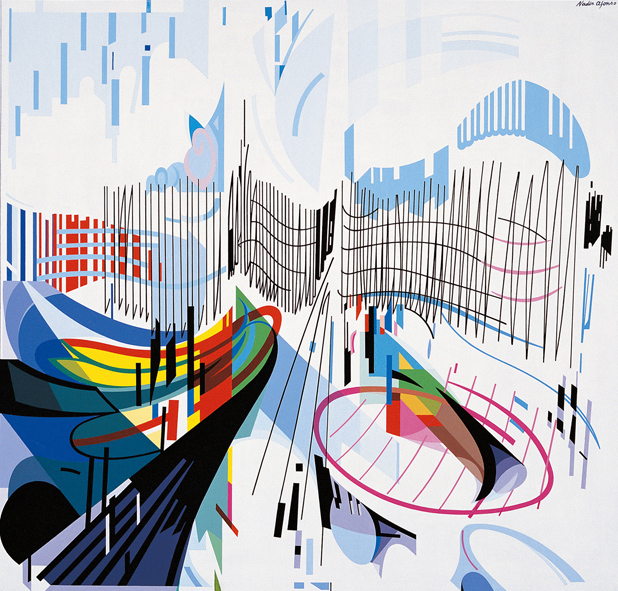
NADIR AFONSO. Architetto, pittore e collezionista.
Museo Carlo Bilotti Aranciera di Villa Borghese
Viale Fiorello La Guardia – 00197 Roma
18 luglio – 30 settembre 2012
Orario:
dal martedì alla domenica dalle 9.00 alle 19.00 (la biglietteria chiude alle 18.30); chiuso il lunedì
Catalogo: Carlo Cambi editore
Ufficio Stampa
SPAINI & PARTNERS T. 050 36042/310920 www.spaini.it
Guido Spaini guido.spaini@spaini.it
Matilde Meucci 329 6321362 matilde.meucci@spaini.it
Rachele Giannessi 3473839137 ufficiostampa@spaini.it

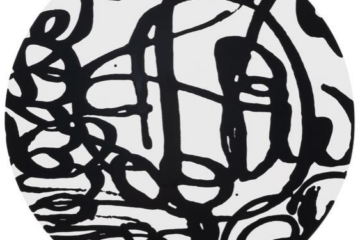
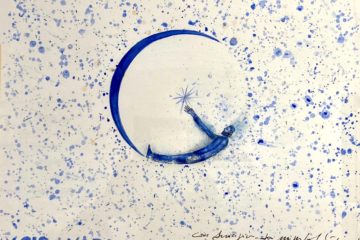
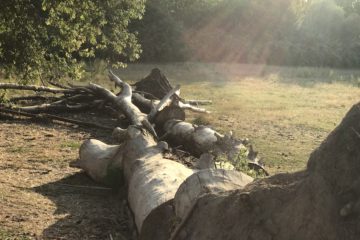
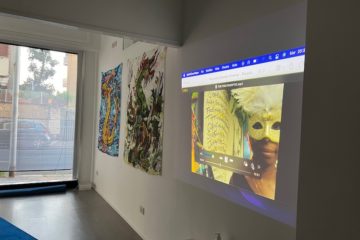

No Comment